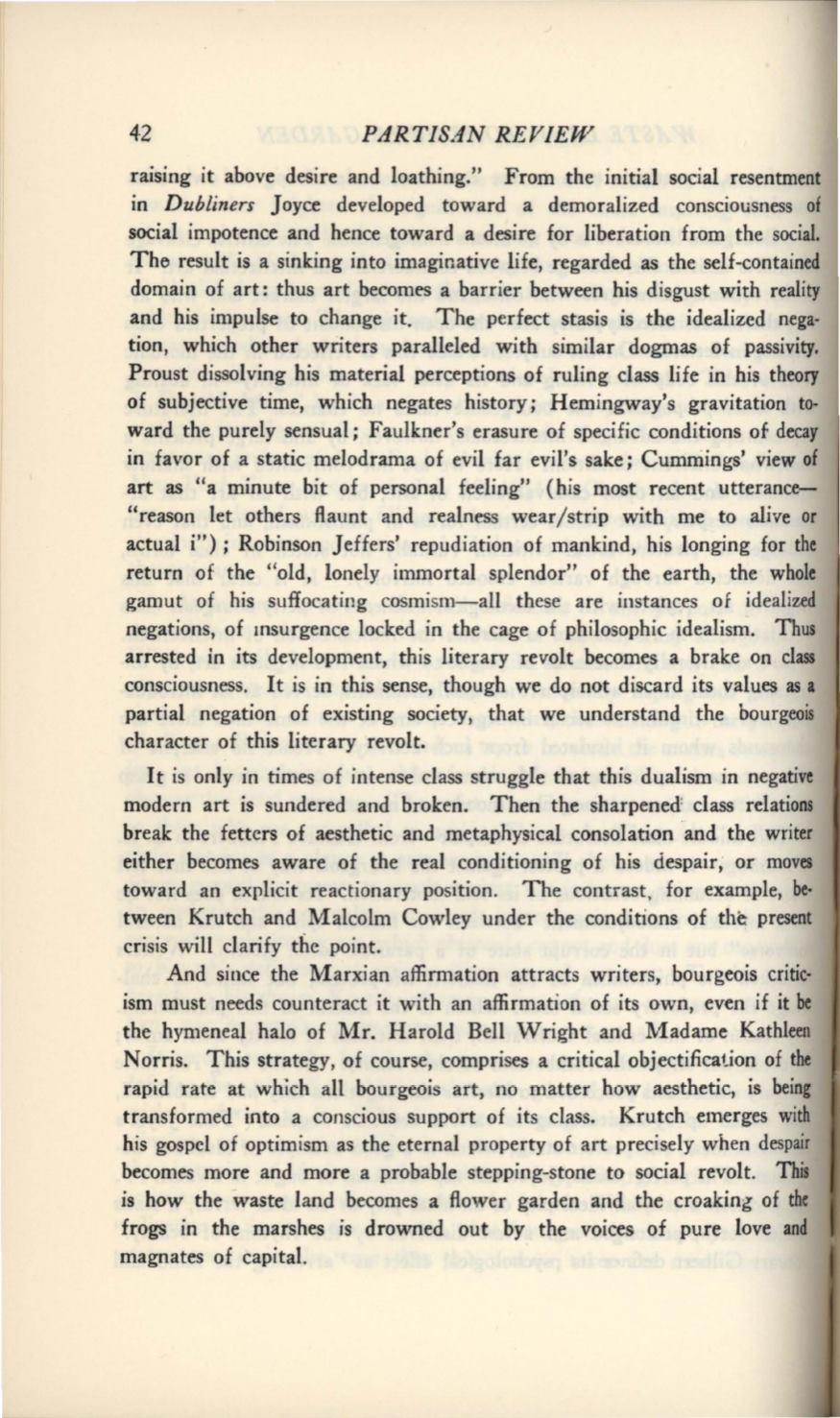
42
PARTISAN REVIEW
raising it above desire and loathing." From the initial social resentment
in
Dubliners
Joyce developed toward a demoralized consciousness of
social impotence and hence toward a desire for liberation from the social.
The result is a sinking into imaginative life, regarded as the self-contained
domain of art: thus art becomes a barrier between his disgust with reality
and his impulse to change it. The perfect stasis is the idealized nega·
tion, which other writers paralleled with similar dogmas of passivity.
Proust dissolving his material perceptions of ruling class life in his theory
of subjective time, which negates history; Hemingway's gravitation to–
ward the purely sensual; Faulkner's erasure of specific conditions of decay
in favor of a static melodrama of evil far evil's sake; Cummings' view of
art as "a minute bit of personal feeling" (his most recent utterance–
"reason let others flaunt and realness wear/strip with me to alive or
actual i") ; Robinson Jeffers' repudiation of mankind, his longing for the
return of the "old, lonely immortal splendor" of the earth, the whole
gamut of his suffocating cosmism-all these are instances of idealized
negations, of msurgence locked in the cage of philosophic idealism. Thus
arrested in its development, this literary revolt becomes a brake on
class
consciousness. It is in this sense, though we do not discard its values as a
partial negation of existing society, that we understand the bourgeois
character of this literary revolt.
It is only in times of intense class struggle that this dualism in negative
modern art is sundered and broken. Then the sharpened' class relations
break the fetters of aesthetic and metaphysical consolation and the writer
either becomes aware of the real conditioning of his despair; or moves
toward an explicit reactionary position. The contrast, for example,
be·
tween Krutch and Malcolm Cowley under the conditions of the present
crisis will clarify the point.
And since the Marxian affirmation attracts writers, bourgeois critic–
ism must needs counteract it with an affirmation of its own, even if it
be
the hymeneal halo of Mr. Harold Bell Wright and Madame Kathleen
Norris. This strategy, of course, comprises a critical objectification of the
rapid rate at which all bourgeois art, no matter how aesthetic, is being
transformed into a conscious support of its class. Krutch emerges with
his gospel of optimism as the eternal property of art precisely when despair
becomes more and more a probable stepping-stone to social revolt.
This
is how the waste land becomes a flower garden and the croaking of the
frogs in the marshes is drowned out by the voices of pure love and
magnates of capital.


